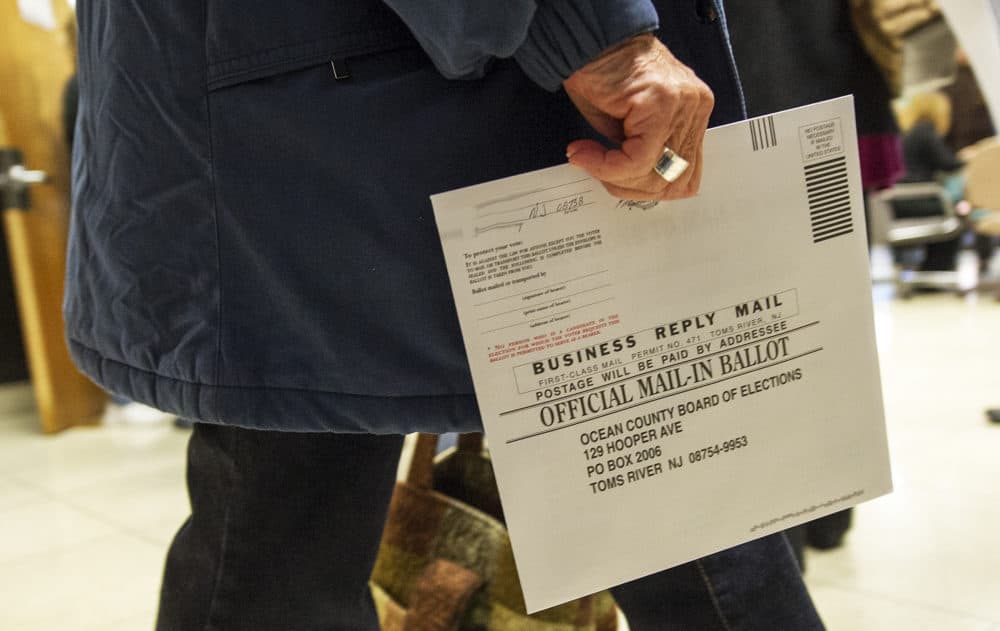Advertisement
All-Mail Voting In November Is 'Possible' Amid Coronavirus Crisis, Washington Secretary Of State Says
Resume
Fourteen states have now postponed presidential primaries because of the coronavirus crisis. Calls for nationwide mail-in voting are growing over concerns that COVID-19 will threaten voter turnout in November.
Currently, only five states — Colorado, Oregon, Hawaii, Utah and Washington — conduct all of their elections by mail. Washington state recently held its presidential primary using mail-in ballots.
Washington’s Secretary of State Kim Wyman says between her and the state’s Director of Elections Lori Augino, they have fielded at least 25 calls from other states asking about how voting in Washington works.
She’s telling states that it’s possible to convert exclusively to mail-in voting, but it won’t come without some challenges, including considering the price tag on the resources that are needed. Additionally, many states have laws in place that restrict the expansion of voting options.
In Washington state, Wyman says it took multiple years for their voting system to completely convert.
“States that are contemplating this have to realize that there's a lot of infrastructures that need to be built in, not only machinery to be more efficient and how you process those ballots, but also just having the personnel to ramp it up,” she says.
The state has experienced success with voter turnout, she says. Washington had the highest voter turnout in the presidential primary season so far, she says, even amid the state’s COVID-19 concerns.
Every one of the state’s 4.5 million registered voters receive a ballot by mail for every election they are eligible to vote in, she says. Voters fill out the ballot, put it in a security envelope with no identifying marks to keep voter secrecy intact, then place that envelope inside an outer mailing envelope, she explains.
The outer mailing envelope includes an oath that voters sign that says they are eligible to participate, she says. Voters can drop it in the mail with a prepaid stamp or deposit the ballot in one of the about 500 ballot drop boxes around the state, she says.
“Those ballots are returned to the county election offices and they're processed and counted there,” she says. “Results are posted on election night at 8 p.m [PST].”
The issue of security is often brought up with the mail-in voting system, but Wyman says the state has multiple steps to make sure it’s secure.
The state has a collection of voter registration signatures on record. An election official can compare the signature on the ballot to the signature the state has on file.
Matching the signature is “really the make it or break it point,” she says.
If the signature on file doesn’t match up, secondary checks are conducted, she says.
“Ultimately we will contact the voter and let them know their signature maybe has changed or they forgot to sign the envelope,” she says. “They have up until almost certification day, which in our state is either 10 to 20 days after election day, to cure that signature, update it and to have their ballot counted.”
She admits there is no “perfect solution” to COVID-19 and voting concerns. However, she says she has colleagues around the U.S. working together to ensure registered voters can securely cast their ballots on Nov. 3.
“Election officials across the country have been working on plans for cybersecurity and we have communication channels we didn't before,” she says. “And I think those conversations are really helping us get to the point where we could do voting at home across the country.”
Lynn Menegon produced and edited this interview for broadcast with Tinku Ray. Serena McMahon adapted it for the web.
This segment aired on March 31, 2020.

